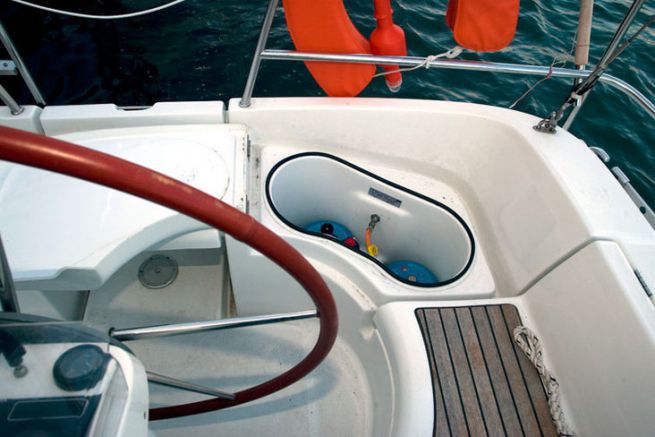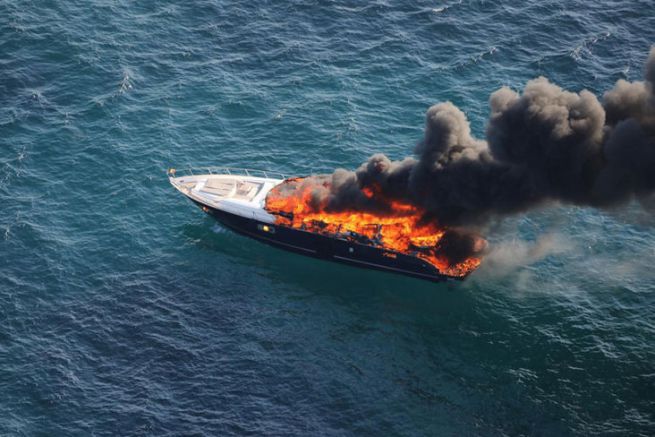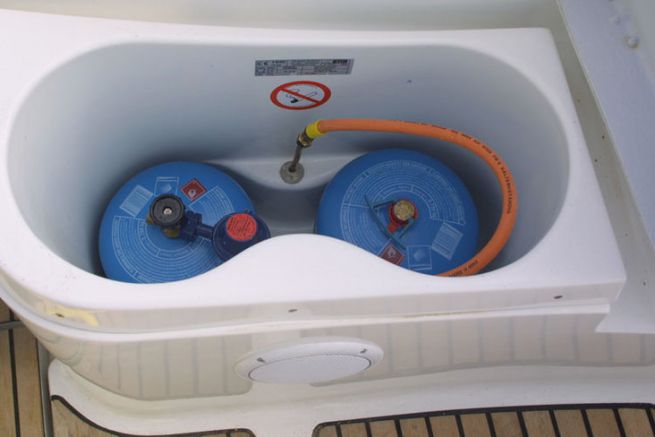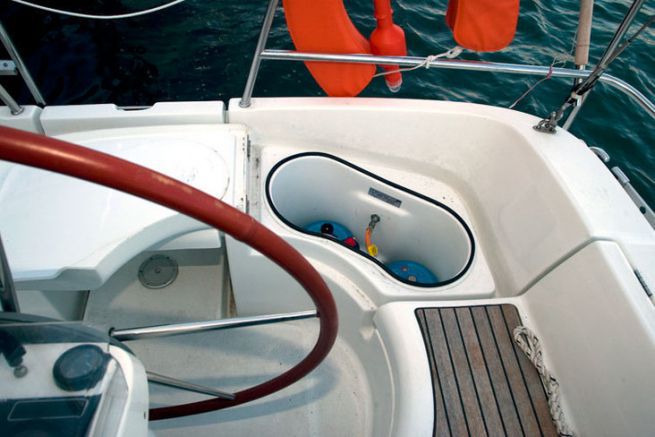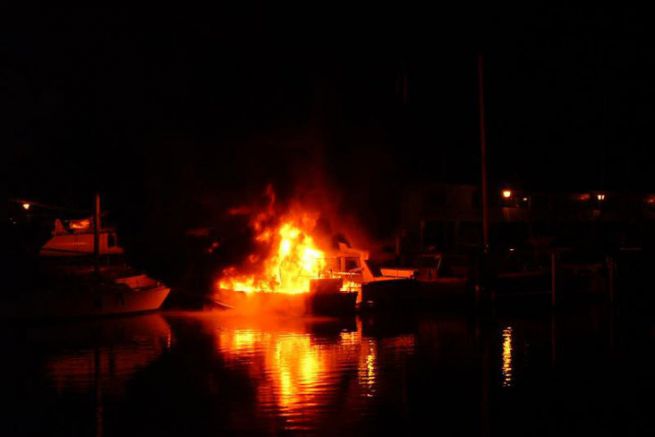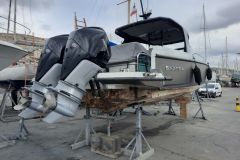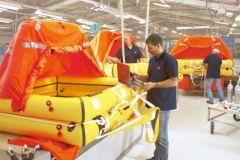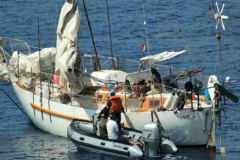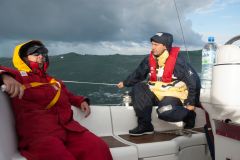Gas installations on board new recreational craft are governed by ISO 10239/2017. By extension, ships already in service could be updated.
In general, all materials and equipment used must be corrosion-resistant. The main points of this standard are as follows.
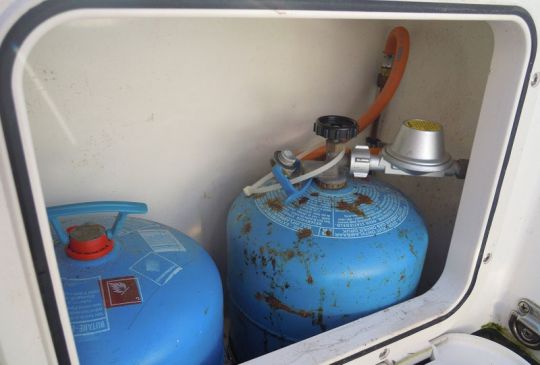
Storage
- The storage of gas (cylinders) must be in trunks equipped with a drain opening located above the waterline. The gas in its liquid state must be able to be discharged by gravity.
- Cylinders must be stored upright and stowed (not all regulators manage all gas in its liquid state at their inlet when the cylinders are lying down).
- No ignition source must be present in the box (electrical junction box for example...).
- All trunk exit hoses or hoses must be fitted with a shell gland to ensure that the gas is not transmitted to another compartment in the event of a leak.
- The installation of a pressure gauge is mandatory.
Pressure regulators
The devices must be connected to the tanks via one or more regulators whose final expansion must not be adjustable by the user.
They must be mounted in cabinets or wells.
If a two-stage system is installed (medium pressure coupler/expander in the storage box and then low pressure regulator before the device), the medium pressure regulator must be equipped with a system allowing discharge without damage from possible suppression (safety with respect to certain refills in exotic countries that may have 3 or 4 times the normal pressure!
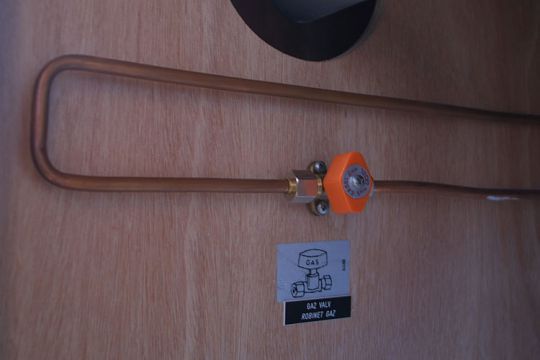
Piping system
- Rigid pipe made of copper or stainless steel with a diameter of 12mm.
- Brazing of silver fittings (melting temperature above 450°) or olive fittings without specific soldering (extreme mistrust when using these fittings, their assembly must be perfect).
- The pipe network, once assembled, must not present any tension on its connections.
- Use as few connections as possible. Crossing of the engine compartment without connection.
- Visible tubes installed (to avoid accidental perforations with a nail, a screw), fixed every 50cm except in engine wedge if not sheathed, 30 cm.
- Passages through partitions and other ducts.
- No direct contact with the hull, bulkheads or engine (to avoid raking or electrolysis).
- Laying the tubes above the bilge water level (to avoid corrosion by immersion).
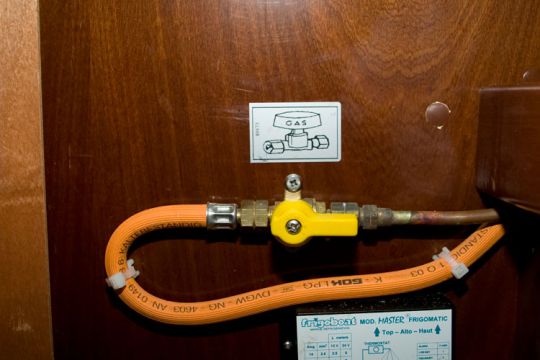
Flexible hoses
- Armoured hoses, only permitted for connection of fixed tank tube or expansion tank and expansion valve/device valve connection.
- The hoses do not pass through walls or partitions (to avoid raking).
- They have the minimum length and are never more than 1m long.
- The hoses are waterproof to 35 bar and burst resistant up to 60 bar.
Shut-off valve
In a single cylinder installation, the cylinder valve is sufficient.
- In a two-bottle system, the installation of a coupler changeover switch with a valve is required.
- On the device side, each fixed pipe must be equipped with a shut-off valve (low pressure regulator for two-stage systems and gas shut-off valve for single-stage expansion systems) on the device side. If the valve is not installed in the immediate vicinity of the unit, external marking of its position is mandatory.
- The use of needle valves or gate valves is prohibited.
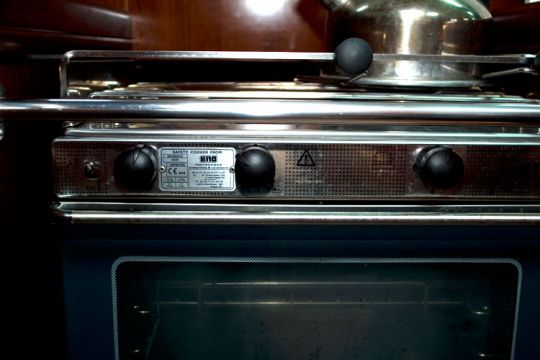
Devices
- The devices must be equipped with a thermocouple (a device that prevents the emission of flameless gas) as standard.
- The devices must not cause excessive heating of adjacent materials, if necessary a heat shield must be installed.
- For ovens, fridges, heaters and water heaters, a flue gas exhaust duct is mandatory unless one of these appliances is installed alone in a room with a volume of more than 15m3. Evacuation systems, without flaps, must always remain accessible for inspection.
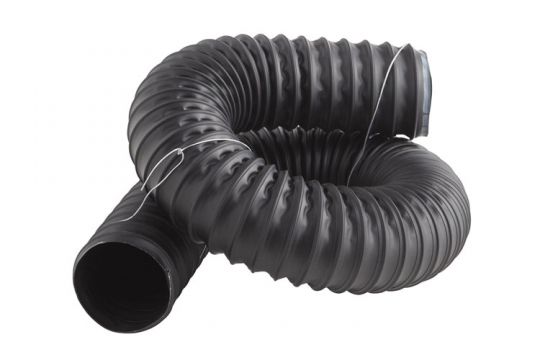
Fresh air supply
- A fresh air supply is mandatory for heaters, lamps and refrigerators.
- It must have a surface area of at least 10cm2.
Safety instructions
- The position of stopcocks, tanks, regulators must be marked with labels.
- For cooking appliances, a hatch must remain open and their use as a heating appliance is prohibited, these stipulations must appear on a label near these appliances.
Gas regulations may seem restrictive, but what is this constraint in the face of the dramatic consequences of an accident? If it is not necessarily essential to update the entire installation, wouldn't it be wise to compare the main regulatory points with the situation on board?
